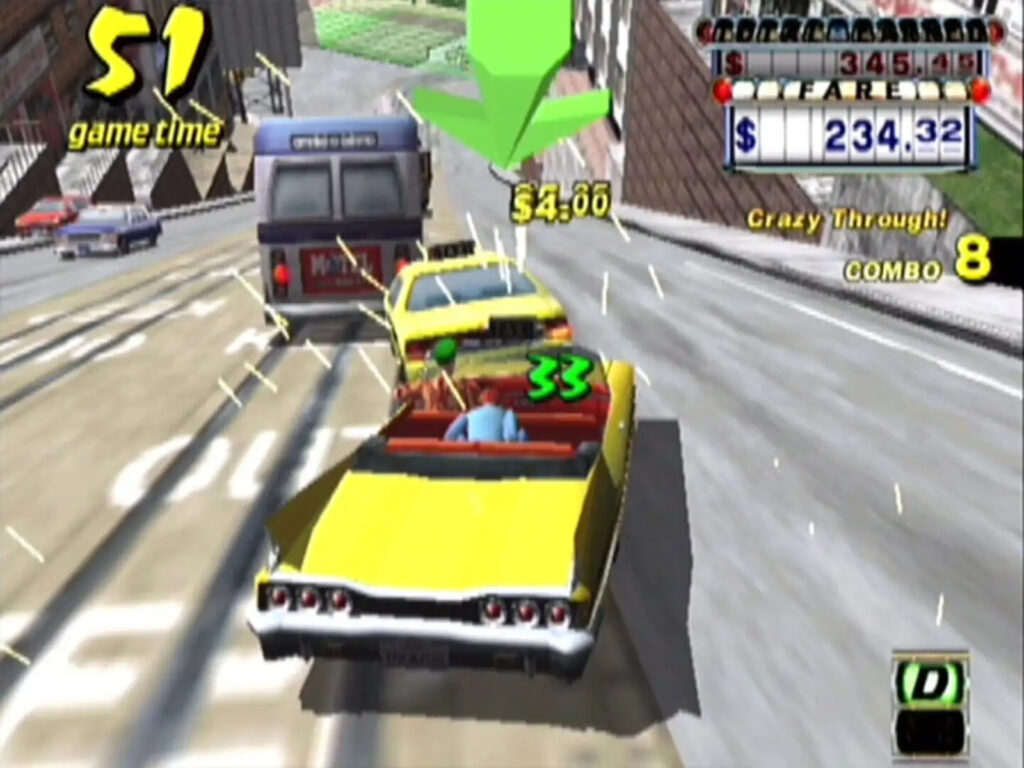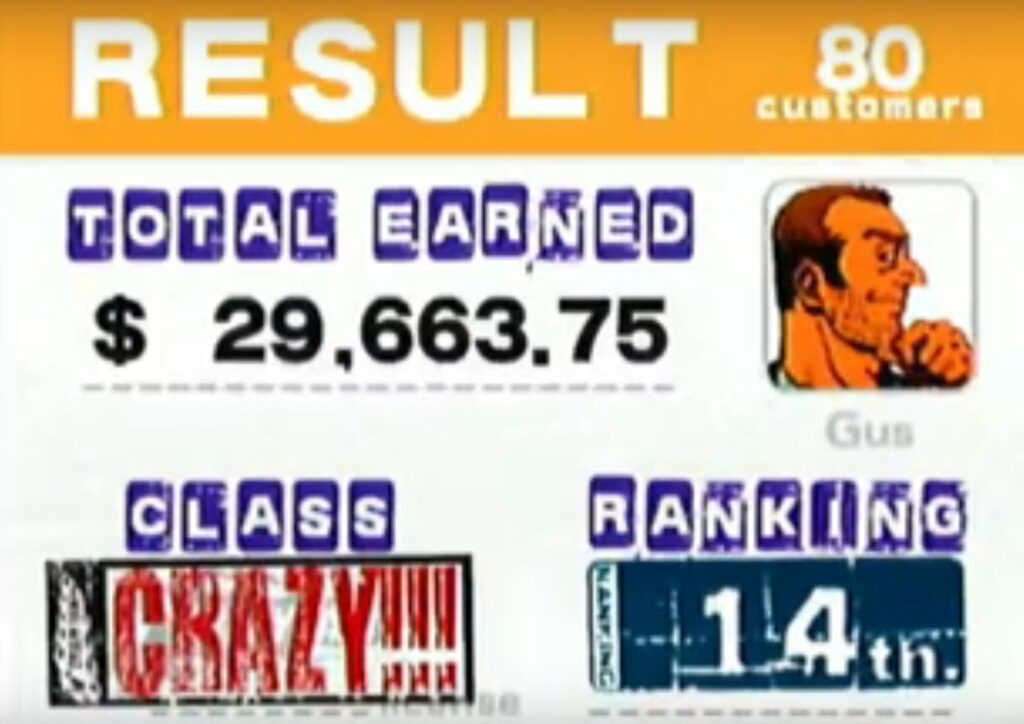(EDIT: I’m reminded that AOC is a representative, not a Senator. Which is like, lol, if you care about facts or something. Still I’ve corrected it.)
We don’t post about politics much here. This is entirely not because it might drive people away, but it is because much of the rest of the internet is full of it, and we’re feeling a bit overwhelmed by it all, and the terrible consequences if the wrong person (you know who he is) wins in the US in just a week. Anyway, many of our readers aren’t even in the US, and to all of you, I say, I envy you.
But a weird bit of news came out involving Kamala Harris’* VP** candidate Tim Walz that both edges into our lane and is an excuse to talk about something I’ve long been wanting to remark upon, about Sega’s classic arcade racing-game-but-not Crazy Taxi.
(* For non US-people: Kamala Harris is the Democratic candidate for President in 2024. **”VP” stands for Vice President, a largely ceremonial role, but should something happen to the President, the Vice President becomes the new President.)
I’ve played a lot of Crazy Taxi. I played a lot of Crazy Taxi 2 as well. I had a Dreamcast, for the brief period it existed, and they were unquestionably great games for that system, with amazing (if Youtube-unfriendly) soundtracks. Well as it turns out Tim Walz has great taste in games, because back then he had a Dreamcast too, and he had Crazy Taxi for it. And he streamed a few minutes of it, with terrific Democratic*** House Representative**** Alexandria Ocasio-Cortez.
(***”Democratic” refers to the Democratic Party, the US’s left-ish party that currently serves as our feeble bulwark against the hooting forces of awfulness that beset our entire world. ****”House Representative” means a member of the House of Repesentatives, one of the US’s two Legislative Houses. That concludes the US civics portion of our post.)
Most of the stream was taken up with playing Madden, which isn’t in one of our more favored categories, but the five minutes of Crazy Taxi were posted to Walz’s Youtube channel:
I am conflicted about this video. Walz is one of the most personable people ever to be nominated for high office, a genuinely friendly individual. But he isn’t a great Crazy Taxi player. And it might be because he doesn’t know how to do a maneuver called a “Crazy Dash.”
(Let me say now: I don’t even appreciate making jokes that sound like “he’s bad at gaemz lol im voting for other guy,” the stakes are way too high for me to be able to laugh at that. Just, keep it in your hat/purse/gender neutral container, please.)
But this reminded me of something I’ve thought about for a long time, and was driven (heh) home to me over DragonCon this year. There was a Crazy Taxi machine there, at stand-up model, I think with a slightly flaky gas pedal, that made it unreliable to perform Crazy Dashes.

A Crazy Dash is simple to perform once you know how. From a halt, with the gear shift in Reverse, in quick succession shift to Drive and slam the gas pedal. If the timing is right, your car will lurch forward with a burst of speed. And if you do this while driving, shifting to Reverse with foot off the gas, then shifting to Drive and flooring it with the same timing as a Dash, it’s called a “Limiter Cut,” and you get an even greater burst of speed!
Crazy Dashes and Limiter Cuts are essential to even slightly good games of Crazy Taxi, which is why the sit down version of the game puts instructions for how to do them on the control panel, why the Dreamcast version’s manual explains precisely how to do them, and why at least one of the squares in the “Crazy Box” challenge mode is all about teaching you how to perform them. It’s what I’ve come to think of as gatekeeper knowledge: it guards the way to good scores and long games. If you don’t know it, you’re doomed to fail.

Crazy Taxi is an arcade game. Even on the Dreamcast, it’s just a direct port of the arcade version with added modes. Arcade games want your money, and they don’t want to give you very long games in exchange for it, so the next player can step up and put in their doomed quarters as well. But the catch is, if good players can’t have decently-playing games, then people won’t play. I heard it said that the average target game length was 90 seconds, and average means a substantial number of games will come in under that mark.
Yet, I can play Crazy Taxi for substantially longer than 90 seconds. I can go for 30 minutes. And it’s thanks in part to the Crazy Dash and the Limiter Cut, essential knowledge for the reckless cabbies of Faux San Francisco.
Because of the DragonCon Crazy Taxi machine’s flaky gas pedal, I didn’t have any 30 minute games there. But I did manage to make the scoreboard, barely, at 20th place, with a score of just over $5,000, getting (by the inflated metrics of its scoring system) a Class S license. Thing is, I must have watched a dozen other people play the game at DragonCon this year (the arcades there are always super packed), and none of them came close even to my meager score. Because none of them knew how to do a Crazy Dash. It was a stand-up cabinet, which didn’t have that sticker explaining how to do one.
That’s what I mean by gatekeeper information: it’s literally One Weird Trick to stellar Crazy Taxi scores and game times. Once you know how to do it your journey isn’t over, in fact I think that’s where the game starts to get really interesting, and my highest scores on the easiest difficulty are nearly $70K. But if you don’t know how to at least do a Crazy Dash, you will never get a good game of Crazy Taxi, you just have no chance. You’ll just waste too much time accelerating from a stop, and you’ll have to stop frequently to let off customers and pick up new ones. Its just how it’s designed.

What amazes me is that Crazy Taxi was a hit, it did very well in arcades and on Dreamcast, and yet still most players never learn this information. And in a way, and understand that I’m uncomfortable with this conclusion, that’s for the best? Like how a crane game set to reflex towards a target winning percentage will be more likely not to drop a piece of plush if a lot of players have recently lost, so too are all those players losing quickly at CT allowing the designers to guard half-hour games behind a simple maneuver that, still, few players will ever bother learning. The alternative is to make the trick harder, or even not to have one, dooming everyone, the casual and the dedicated, to those pitiful 90-second games. That’s capitalism for you.
Which shows, I guess, that the illusion of being able to do better is more important to arcade game success than reality? I don’t know, I’m uncomfortable talking about illusions in a post that started out mentioning politics. But hey, Tim Walz! If you read this and want some Crazy Taxi tips, reach out! And good luck in November, please help Kamala Harris to send That Other Person as far away from public office as possible.
Once you start thinking of it in terms of gatekeeper knowledge, you start seeing it everywhere. One-hit kill action games are full of it, since the first time you encounter any enemy, it’s likely to behave in some way that will kill you. The best action games will try to have an enemy demonstrate unexpected behavior at least once before it’s likely to be fatal. And any time a game kills your character out of basic unfairness, like from a sudden unavoidable death trap, that’s gatekeeper info.
UFO 50, for all its greatness, does this a lot. The very first game in the collection, Barbuta, has an instant death laughably close to the start. Some of its games feel like a sequence of deaths you have to experience, each at least once, before you’re allowed to win. But it’s far from unique in this, and in presenting itself as the history of a fictional 80s developer, it could be argued that it’s mirroring the development of game design at the time.
